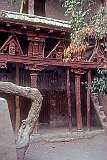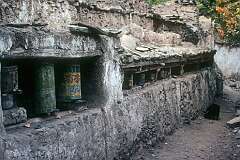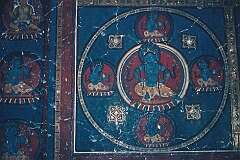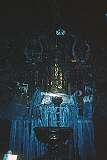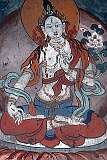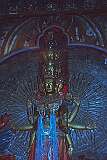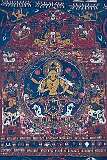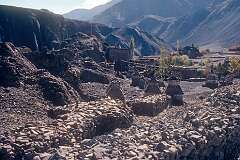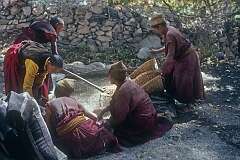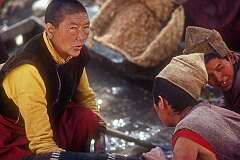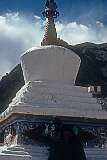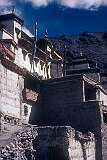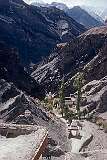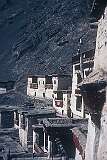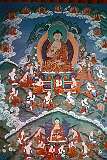The Alchi and Rizong Buddhist monasteries, Ladakh
17-18 October 1979
Alchi and Rizong monasteries, though both in Ladakh, offer contrasting impressions of Buddhist life.
Alchi, founded in the 11th century by the great translator Rinchen Zangpo, is famed for its exquisite murals and wood carvings that reflect a fusion of Kashmiri, Indian, and Tibetan artistic traditions. Unlike most monasteries perched on cliffs, Alchi lies on the flat Indus valley floor, making it more a monastic complex than a fortress. Its ancient temples preserve some of the finest Buddhist art in the Himalayas, including celestial figures, mandalas, and detailed wall paintings that glow with timeless serenity.
Rizong, by contrast, is a 19th-century monastery founded by Lama Tsultim Nima. Often called the “Paradise for Meditation,” it sits dramatically in a secluded gorge, far from villages. Known for strict monastic discipline, Rizong emphasizes study, prayer, and ascetic life. Together, Alchi and Rizong reflect Ladakh’s dual legacy: artistic splendor and austere devotion.
Alchi, founded in the 11th century by the great translator Rinchen Zangpo, is famed for its exquisite murals and wood carvings that reflect a fusion of Kashmiri, Indian, and Tibetan artistic traditions. Unlike most monasteries perched on cliffs, Alchi lies on the flat Indus valley floor, making it more a monastic complex than a fortress. Its ancient temples preserve some of the finest Buddhist art in the Himalayas, including celestial figures, mandalas, and detailed wall paintings that glow with timeless serenity.
Rizong, by contrast, is a 19th-century monastery founded by Lama Tsultim Nima. Often called the “Paradise for Meditation,” it sits dramatically in a secluded gorge, far from villages. Known for strict monastic discipline, Rizong emphasizes study, prayer, and ascetic life. Together, Alchi and Rizong reflect Ladakh’s dual legacy: artistic splendor and austere devotion.







